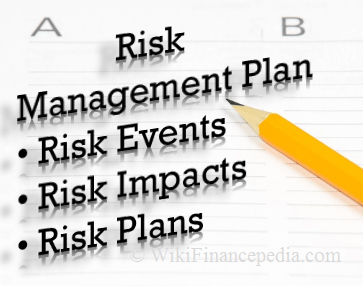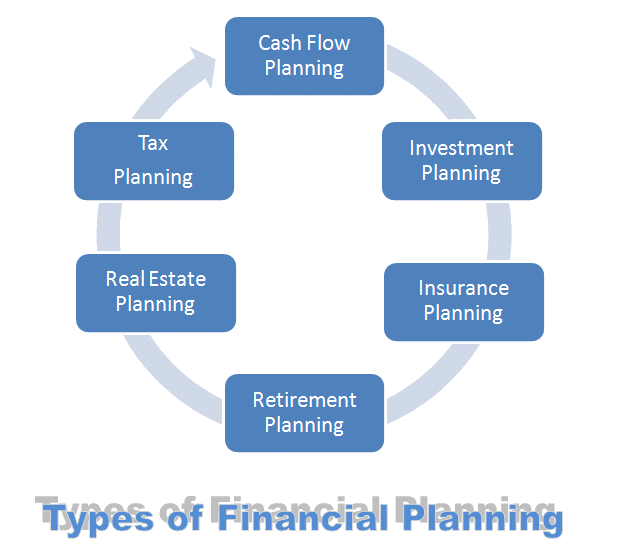Risk Management Plan Definition:
Risk management is an enduring process that prolongs through the life of a project. It entails processes for risk management planning, identification, examination, supervising and administer. Many of these procedures are efficiently updated all the way through the project’s lifespan. The modernization of risk management is essential for new risks can be recognized at any point of time and during any phase of the project. Not only does the risk management aim to scrutinize the possibility and impact or aftermath of events that can cause adversary to the project but also if there’s any event that has the potential to have a positive impact, the risk management is supposed to optimize it. Prior to the initiation of projects, the identification of risk starts, and it is quite essential to decide other things that might be affected by the impact of those risks. As the project matures or builds up its pace, and the number of risks elevates and increment in risks occurs throughout the lifecycle of the project. Once a risk is characterized, next task of the managers is to ascertain the possibility of occurrence of the risk, the intensity of impact to the schedule, scope, capital cost, quality, and the potential output and then prioritize the risk based on the degree of risk involved and the expected returns. Like discussed earlier risk events have the potential to impact the project in multiple impact categories. Setting up risk priority is more or less based on the possibility of numeral categories impacted, occurrence of risk events and the degree viz. low, medium and high to which they impact the project. All the risks those are identifiable should be mentioned into a regularly updated risk register, and documented as a risk statement. This document is known as risk management plan.
What is Risk?
An event that has a likelihood of stirring, and has the potential to cause either a positive or negative impact to a project if that risk were to occur, is known as risk. There can be more than causes for the occurrence of any risk, for the risks are inter-dependent on each other and can cause one or more shocks to a project’s development.
Risk Events and its Impact:
All projects are begin with some assumption, the project heads assume a few factor of risk that might have an impact (either positive or negative) on the project, based on which they plan their strategies to minimize the risk’s aftermath. Let’s take an example of how can a risk affect an investment, hypothetically speaking, a company ABC has a possibility to hit by a risk. The cause of the risk is procuring an environmental authorization to do their construction work, also they have inadequate human resources and personnel assigned to design the project are limited. Now, the risk event is – the authorized officials may take more time to sanction the permission or to issue the permit, and the personnel designated for the task might not be available or as it happens their efficiency may not be sufficient for the activity. What happens if above mentioned risks were to hit the company ABC? If any of these indecisive events occur, the project will be experiencing a shock, in terms of capital cost, schedule or performance, perhaps all three. To check the impact, the management team with risk management will opt for the most desirable approach, tools and techniques to monitor and track those events that have the potential to impact the outcome of a project.
Purpose of Risk Management Plan:
The risk management plan articulates the progressions, instruments, measures and procedures that will be utilized to manage and administer those events that have the potential to cause a negative impact on the project’s outcome. So, you can understand the risk management plan as a controlling document for managing and supervising all project risks.
The risk management plan involves following process:
1. Risk Identification – Any event that has the potential disrupt the progression of the project as planned, it can further prevent a successful completion. This is the first step in risk management plan. Risk identification accounts for categorization of risks and their sources, prior to the project kickoff and others while the lifespan of the project.
2. Risk Assessment – Once the risk is identified the assessment or an act of determining the possibility that a risk will arise and the impact it will have on the project if it were to occur (the risk). Risk assessment is also known as a “cause and effect” analysis, “cause” is the event that can happen, while the “effect” is the potential shock to a project, if that event were to occur.
3. Risk Mitigation – After assessing and prioritizing risks, the final step involves risk mitigation. It is further divided into two steps – first step entails identifying the diverse activities, or steps, to diminish the possibility of the impact of an adverse risk. After identifying the risks the management team creates a Contingency Plan to check the potential risk. An act of developing and practicing a plan, or a sequence of approaches to check risks’ impact on a project is called contingency plan.
Risk Management Plan Template:
Here you can download the Risk Management Plan Template which includes Risk Management Plan sample and Risk Management Plan example. Hope this word document will be very useful to you in your management plans.
Read E-Learning Tutorial Courses - 100% Free for All
Basics of Risk Management for Beginners
- Chapter 1: What is Risk Management? - Definition, Standards, Methods, Principles
- Currently Reading: Risk Management Plan Definition, Examples, Purpose, Templates
- Chapter 3: What is Risk Management Process? Definition and Process Steps
- Chapter 4: What is Financial Risk Management? - Definition, Analysis, Approaches
- Chapter 5: Enterprise Risk Management Definition, Framework and Templates
- Chapter 6: What is Operational Risk Management? Means, Examples, Framework
- Chapter 7: What is Risk Analysis? Examples, Templates, Methods, Techniques
- Chapter 8: Risk Assessment Meaning, Examples, Templates, Matrix, Analysis
- Chapter 9: Risk Mitigation Meaning, Examples, Templates, Plan, Strategies







